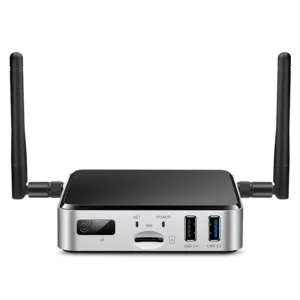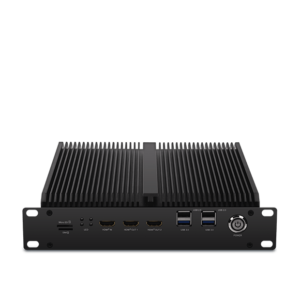A Detailed Manual to Deploying AI on Side Devices
A Detailed Manual to Deploying AI on Side Devices
Blog Article
AI on Side Devices vs. Cloud AI: Professionals and Cons
Real-World Purposes of AI on Side Products
Artificial intelligence (AI) is no further limited to the region of big, centralized information centers. Thanks to developments in technology, side products today perform a key position in deploying AI directly wherever knowledge is generated. But what does AI on edge devices suggest, and exactly why is it creating such a excitement? Here, we'll explore how edge ai device works in actuality through side units and discover their wide selection of realistic applications.

What's AI on Side Products?
AI on edge devices refers to deploying synthetic intelligence methods entirely on units like smartphones, cameras, drones, or IoT sensors. These devices do not need use of centralized servers for control knowledge; alternatively, they perform evaluation and conclusions locally, creating the procedure faster, more effective, and often more secure.
The "edge" here only identifies research done near or at the origin of data technology, instead of depending on the cloud. This shift is pushed by the needs for real-time data control and the necessity to minimize latency, enhance solitude, and lower bandwidth usage.
Critical Real-World Programs of Side AI
1. Wise Monitoring
AI-powered cameras equipped with skin recognition, action recognition, and anomaly detection are transforming surveillance systems. Side devices in that domain can analyze video streams in real-time to recognize dubious activities, remove false alerts, and enhance community safety. As an example, AI calculations may detect uncommon movements and alert authorities instantly without the necessity to send video knowledge to a main machine for analysis.
2. Healthcare Tracking
Wearable products and lightweight medical gear are leveraging ai m.2 module for handling health information more efficiently. Edge-based AI in units like wellness trackers and smartwatches monitors users' vitals, such as heartbeat, oxygen degrees, or blood stress, in real-time. These methods analyze information locally and give quick feedback, paving the way in which for faster treatment during emergencies.
Beyond wearables, sophisticated medical imaging products equipped with on-device AI may discover signals of diseases like cancer, permitting earlier in the day diagnoses even yet in remote areas without internet connectivity.
3. Autonomous Vehicles
Self-driving cars are among the absolute most well-known examples of edge AI in action. With devices, cameras, and LiDAR techniques helping as data resources, AI computations take position onboard these vehicles to produce split-second decisions. From detecting pedestrians and obstacles to moving city streets, edge AI guarantees that the automobile runs reliably and efficiently. The real-time handling convenience of edge units removes the reliance on high-latency cloud methods, ensuring safety in life-critical scenarios.
4. Retail Analytics
Edge units in retail situations are helping organizations analyze consumer behavior. Intelligent racks and AI-equipped cameras may identify client choices, monitor catalog, and also modify in-store experiences in true time. The data made from they assists retailers make informed conclusions, improve client satisfaction, and optimize supply management.

5. Professional IoT
Factories and industrial plants are adopting edge AI to revolutionize their tracking and automation processes. AI-powered sensors on machinery identify possible errors well before they cause costly failures. Predictive preservation pushed by edge AI decreases downtime, enhances production, and guarantees security on the manufacturing floor.
6. Customized Experiences in Consumer Units
Your smartphone is a perfect example of how edge AI personalizes consumer experiences. Features such as for example style assistants, versatile camera options, and on-device language translation use real-time AI to answer person wants without sending sensitive knowledge to outside servers. That fosters equally ease and privacy for the conclusion user.
The Growing Impact of Side AI
The use of AI on edge units remains to spike, pushed by industries' increasing demand for low-latency, real-time computing, and better knowledge privacy. Its purposes are reshaping industries ranging from healthcare and automotive to public protection and retail. By placing AI's power closer to wherever data is developed, edge units aren't only increasing efficiency but additionally demonstrating the unlimited potential of development in the present attached world. Report this page